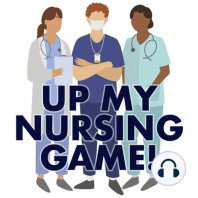55 min listen

What Nurses Need to Know About Critical Care Transport with Katherine Stradling, RN
What Nurses Need to Know About Critical Care Transport with Katherine Stradling, RN
ratings:
Length:
55 minutes
Released:
Jul 5, 2021
Format:
Podcast episode
Description
Patients require transportation for many reasons: to an increased level of care, a decreased level of care, a procedure, or for imaging. Katherine Stradling, BSN, RN, CCRN, TCRN discusses the science of transport, what it's like in the ambulance, and what bedside nurses can do to facilitate safe transport.ObjectivesListeners will be able to describe the difference between basic life support (BLS) transfer vs. critical care transport (CCT)Listeners will be able to explain the physiologic demands placed on patients during transportListeners will be able to describe how the sending nurse can prepare the patient for safe transportBLS v. ALS v. CCTNote: Protocols differ by county and organizationBLS transport is for stable patients who will not require cardiac monitoring or medications during transport. It is typically a team of two or more EMTs. ALS transport includes a paramedic who can perform cardiac monitoring, chronic ventilators, and administer some medications. As Katherine explained, this set up is often unavailable, and thus patients who qualify for ALS transport often are transported by CCTCCT is a team including a critical care RN and two EMT. Their scope includes, but is not limited to cardiac monitoring, medication administration and titration, airway management. CCT is for patients who are not stable and will require intervention during transport.The Science of Patient TransportIncrease O2 demandIncrease ICPNauseaIncreased sympathetic responseVariable BP changesHow the sending nurse can help facilitate safe transportPre-medicate:this often means for pain and nauseaHave paperwork ready to goPull more meds than you think you need. Transportation is often delayed due to variable like traffic.Make room for the CCT crew to come in with their stretcherSpike hard-to-spike meds ahead of time (this is difficult to do on a bumpy ride!)Provide the receiving facility a complete and honest report. Make sure that they have all of the equipment the patient will need.Tip: If you're saying to yourself "the patient should be fine", just remember that the ambulance has finite supplies and team members. It's just the RN and EMTs out there on the road or in a helicopter, so give them more medications and supplies than you'd think and get your patient as stable as possible before they go.Relevant LinksHands to Hearts is a volunteer organization who believes that no one should die of treatable medical emergencies due to lack of education and resources. The organization helps build the first response system and offer life support courses in developing areas across rural Mexico.
Released:
Jul 5, 2021
Format:
Podcast episode
Titles in the series (73)
#4 Potassium Replacement and Inpatient Hypertension by Up My Nursing Game